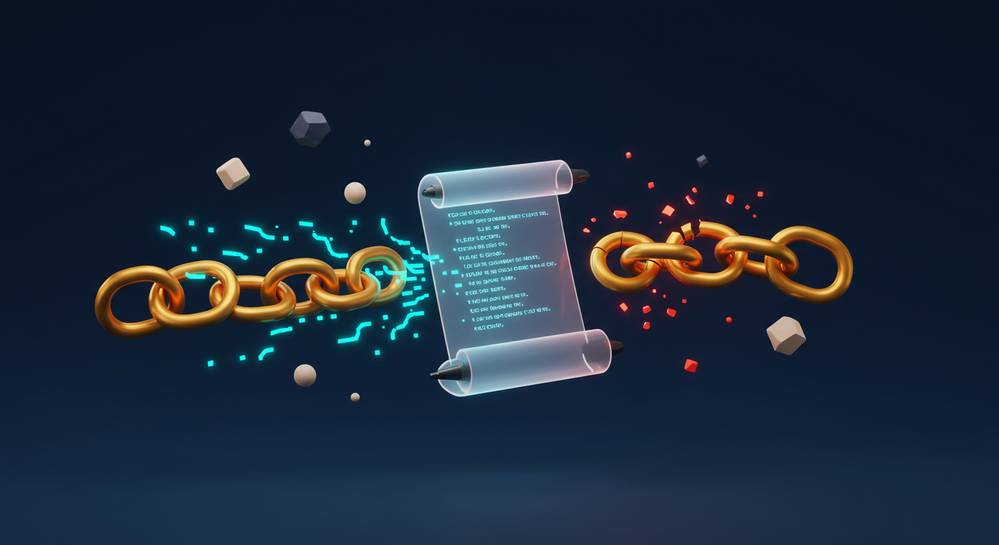Imagine a vending machine. You insert money (the condition), and the machine automatically dispenses your chosen snack (the outcome). This is the basic idea behind what is a smart contract. They are self-executing digital agreements stored on a blockchain, designed to automate transactions and enforce rules without intermediaries. This guide breaks down exactly how they function and why they are a cornerstone of modern blockchain technology.
Defining a smart contract beyond the hype

At its core, a smart contract is a computer program stored on a blockchain that automatically executes when predetermined conditions are met. Think of it as a digital vending machine. You insert cryptocurrency, and the contract dispenses an asset or service according to its programmed rules. This concept, introduced by Nick Szabo in 1994, predates Bitcoin and forms the bedrock of decentralized applications.
Unlike traditional agreements needing lawyers, smart contracts are self-enforcing and tamper-proof. Their terms are written directly into code and exist across decentralized distributed systems. This foundation removes intermediaries, reduces costs, and builds trust through transparent undefined. The agreement is not just a document; it is an active, automated process.
Key characteristics of smart contracts
- Code-based: The agreement is translated into a programming language like Solidity. Its logic is objective and follows the code precisely.
- Blockchain-hosted: Once deployed, the code is immutable and transparent. Anyone on the network can verify its terms and execution history.
- Self-executing: The contract runs automatically when triggers are met, eliminating the need for manual intervention or enforcement.
- Deterministic: A smart contract produces the same output every time the same input is provided, ensuring predictable and reliable outcomes.
How do smart contracts actually work

A smart contract operates on a simple but powerful logic: “if-then” statements. The entire process unfolds in three main stages: creation, deployment, and execution. First, developers write the contract’s code, defining all the rules, conditions, and outcomes. This code acts as the digital equivalent of a legal document, translating complex agreements into objective, machine-readable instructions.
Next, the contract is deployed to a blockchain network like Ethereum. Once on the blockchain, it is assigned a undefined and becomes an immutable part of the public ledger. This step is crucial because it ensures no one can alter its terms after deployment. It is also distributed across all network nodes, eliminating any single point of failure and guaranteeing its availability.
The execution is the final, automated step. When an external event or transaction triggers the conditions laid out in the code, the contract automatically executes the agreed-upon outcome. For example, if a user sends 1 ETH to the contract, then the contract might automatically transfer ownership of a digital asset to that user without any human intervention.
Key advantages and inherent limitations

Smart contracts represent a significant shift from traditional agreements, yet they come with clear trade-offs. They excel in environments demanding automation and trust, but their rigidity can be a drawback in situations requiring human flexibility. Understanding this duality is crucial for evaluating what a smart contract can realistically achieve. Their strengths in efficiency are often balanced by weaknesses in adaptability, a core consideration for implementation.
| Advantages | Limitations |
|---|---|
| Autonomy and Speed: They run automatically without intermediaries, drastically reducing transaction processing times. | Inflexibility: Once deployed on the blockchain, the code cannot be easily changed, making errors or bugs permanent. |
| Trust and Transparency: All parties can view the contract code and transaction history, ensuring complete transparency. | Potential for Bugs: Code vulnerabilities can be exploited by malicious actors, leading to significant financial loss. |
| Security: Cryptographic encryption and a distributed ledger make them extremely difficult to hack or manipulate. | Legal Uncertainty: The legal status and enforceability of smart contracts are still not well-defined in many jurisdictions. |
| Cost Efficiency: Removing intermediaries like lawyers and brokers can significantly lower overall transaction costs. | Scalability Issues: High network congestion can lead to slow transaction speeds and expensive gas fees on popular blockchains. |
Where are smart contracts used today
While the technology is still evolving, smart contracts are already powering innovative applications across various industries. Their ability to automate complex processes and guarantee outcomes makes them a foundational building block for the decentralized web. They are transforming sectors by replacing manual oversight with verifiable, self-executing code.
Decentralized Finance (DeFi)
DeFi is arguably the most prominent use case for what a smart contract is. These programs are the backbone of DeFi applications, enabling services like automated lending, borrowing, and trading on decentralized exchanges. They act as autonomous banks, executing financial transactions based on code without needing a traditional financial institution.
Non-Fungible Tokens (NFTs)
Every NFT is governed by a smart contract. This contract manages the tokens ownership, transferability, and often includes rules for royalty payments. For example, a contract can be programmed to automatically send a percentage of every resale price back to the original creator, a task difficult to enforce in the traditional art world.
Supply Chain Management
In the supply chain, smart contracts improve transparency and efficiency. A contract could automatically release payment to a supplier once a shipments GPS tracker confirms its arrival at a specified destination. This automates verification and payment, reducing delays and disputes between parties involved in the process.
Smart contracts are more than just code; they represent a fundamental shift towards automated, trustless agreements. By removing intermediaries and enforcing rules transparently on the blockchain, they unlock new possibilities for efficiency and security. To continue exploring cutting-edge blockchain concepts, visit Blockchain Global Network.

RELATED POSTS
Join the NODEPAY Airdrop today – Easy to Earn Points
Looking to explore the world...
Overview of Andrew Tate’s crypto wallet
Uncover the secrets of Andrew...
MicroStrategy Short Squeeze: Opportunities in the Crypto
The MicroStrategy short squeeze is...
Blockchain Layer 1: The Foundation of Decentralized Technology and U2U Network’s Vision
Blockchain technology has revolutionized the...
Tellor (TRB Crypto): A secure oracle solution for DeFi
In the blockchain world, accessing...
Milena Mayorga: Influential person in El Salvador politics
Milena Mayorga, a prominent figure...
Vessel Finance: The DEX with near-zero gas fees
In the ever-evolving world of...
What Is an Early Ape in Crypto? Opportunities and Risks Explained
Curious about What Is an...
The Rise of Meme Coins – Top Projects to Watch in 2025
Meme coins are making waves...
What is blockchain technology and How does it work?
What is blockchain technology and...
Who has Andrew Tate’s Crypto Wallet?
Who has Andrew Tate’s Crypto...
Explore Top DePin AI Projects
Exploring the leading DePin AI...
BulbaSwap Airdrop: A unique investment opportunity in DeFi
BulbaSwap, a decentralized exchange (DEX)...
How Base L2 Sequencers are enabling the next generation of blockchain innovation
The evolution of blockchain technology...
Acki Nacki Airdrop: A detailed guide on how to participate
In the rapidly evolving world...
SEC to Host Second Crypto Meeting on April 25
The U.S. Securities and Exchange...